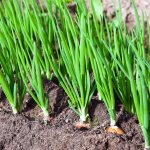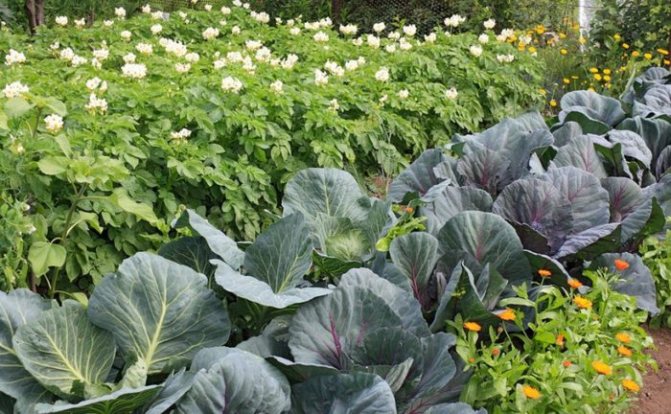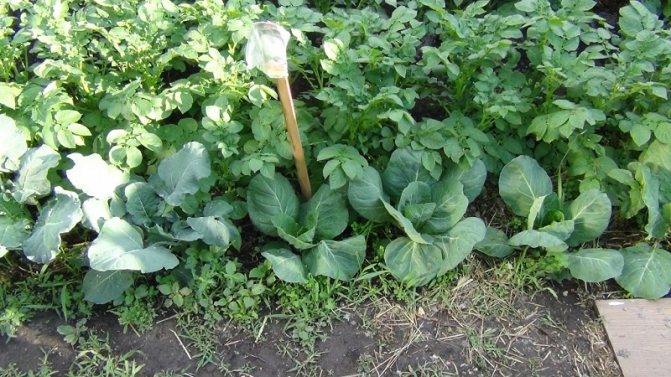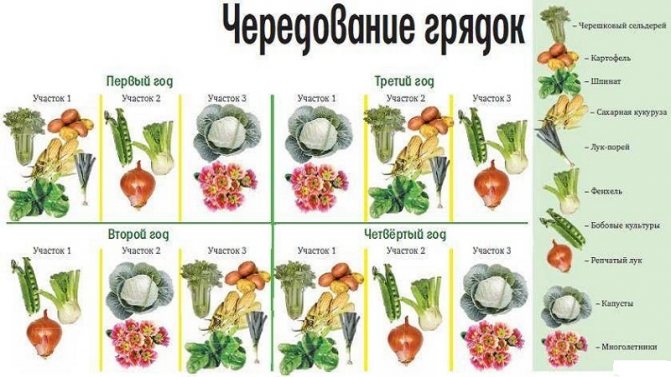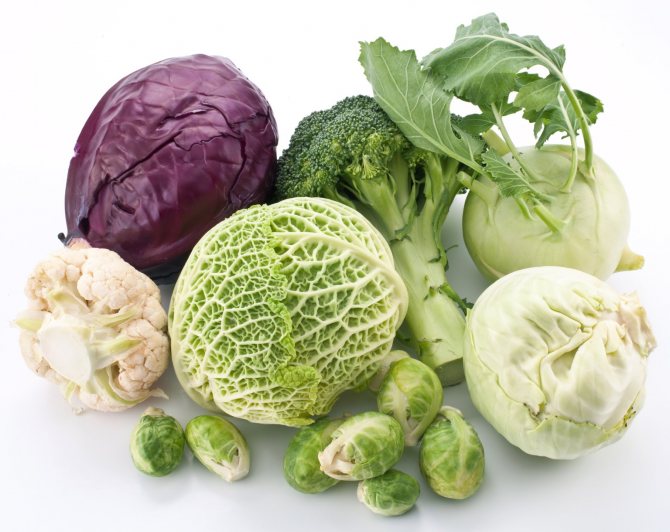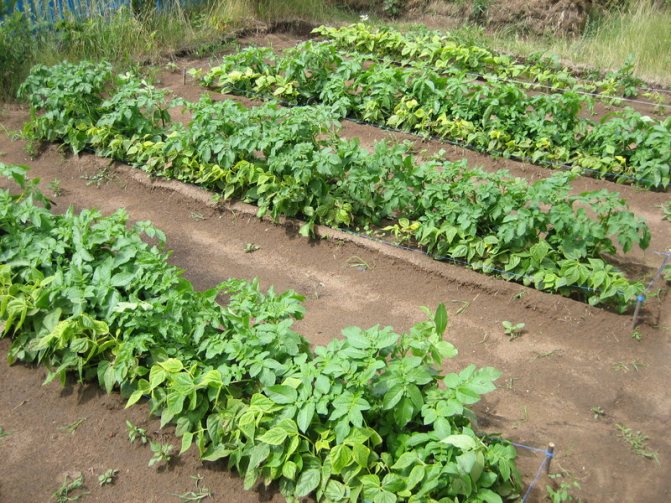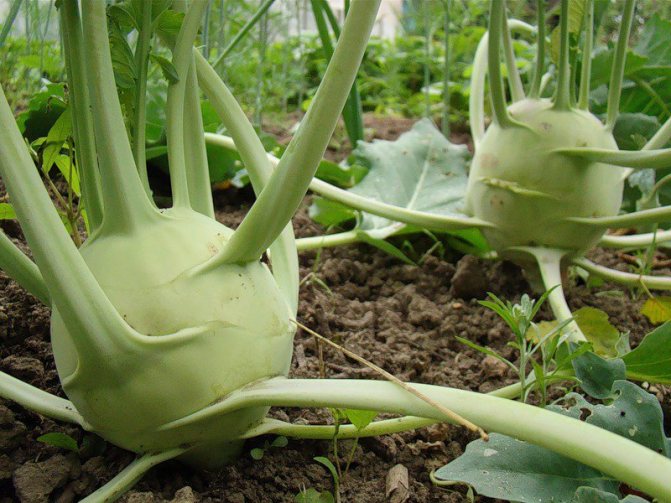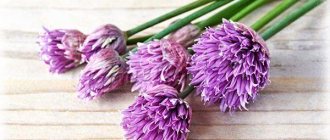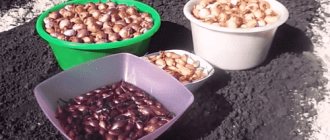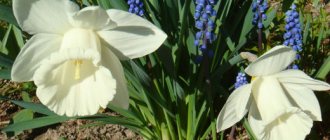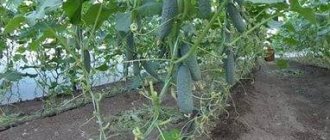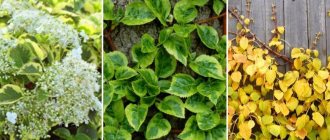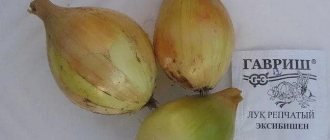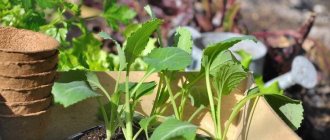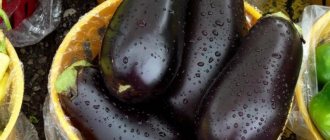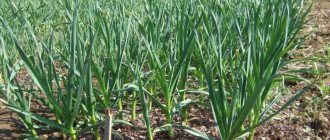Onions are one of the most popular vegetables in Russia. It is difficult to find a summer cottage that does not have a garden bed with this plant. The place for planting a vegetable should always be prepared in advance, and therefore it is always important to pay attention to what to plant the onion after. There are vegetables that enrich the soil with substances necessary for a given culture, and there are those that make the substrate more scarce. Growing rules are not at all complicated - having studied them, any, even an inexperienced summer resident, will be able to collect a colossal harvest.
Fatigue: causes
If the same crop is planted in the same place from year to year, so-called soil fatigue occurs.
This is expressed in the following:
- due to the regular consumption of the same nutrients from the soil, it becomes more scarce and an imbalance occurs;
- identical plants are affected by the same pests, which are already adapting to this place, laying the larvae in the soil, and from year to year there are more and more of them. In addition, the soil also absorbs insecticides, with the help of which gardeners fight insects, and therefore it becomes toxic;
- spores of viral diseases and fungal infections also persist in the soil;
- the substrate accumulates colins - root secretions (sugars, organic acids, hormones, enzymes, phenol compounds);
- the level of soil acidity changes.

A bed with onions
Important! Colin accumulation is normal for some cultures, but for most it is unacceptable. They begin to shrink, their growth and development slows down.
What soil and conditions are needed for onions
Sandy and loamy soils are best suited for onions. In the first case, growth and development occurs faster, it is advisable to grow onions on a feather, and on loam the heads will be larger and tastier.
Clay soils are not suitable for growing this crop as the dense soil will interfere with the development of the plant. But this problem can be solved very simply: you need to add sand to such soil for looseness, and you can safely start growing any type of onion.
The acidity of the soil is also of great importance, it should be in the range of 6.4 to 7.9 pH (neutral or slightly alkaline). With excessively acidic soil, the following components are added to it:
- slaked lime;
- a piece of chalk;
- dolomite flour;
- ground limestone.
Important! The soil on which the vegetable will be grown must be nutritious. To enhance the effect, organic fertilizers are used. Only fresh manure is not suitable.
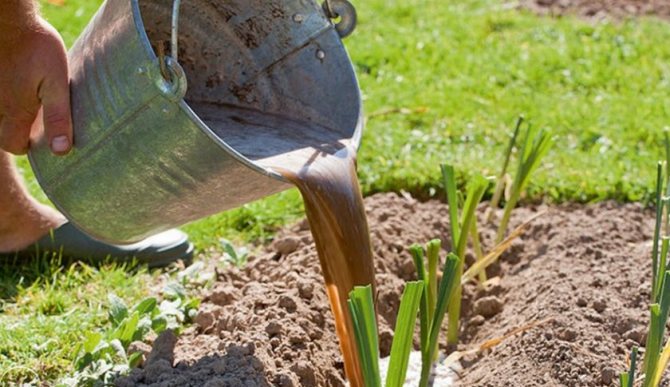

Leek feeding
Does the earth need to rest after a bow
The next year after the onion can be grown:
- Legumes;
- Pumpkin;
- Solanaceae;
- winter crops and root crops.
These plants will not perceive all the pathogens that have accumulated in the ground, the composition of the soil is ideal for them.
What can be planted after the onion for the next year:
| Perfect fit |
|
| Landing is permissible |
|
| Are categorically not suitable |
|
What is crop rotation and why is it needed
Crop rotation is the system of alternating vegetable crops in the garden. Crop rotation purpose:
- Rational use of soil fertility and applied fertilizers.
- Increasing the yield of vegetable plants.
- Control of the spread of pests and diseases.
In most cases, the same vegetable crop can return to its former place of cultivation no earlier than after 3-4 years. In the event of a particularly dangerous disease, this quarantine period is increased to 5-6 years.
Then plant onions of various varieties
The agricultural technology of this vegetable does not cause any difficulties. He needs proper watering, weeding, loosening and fertilization. But it is also worth considering the cultures that grew before him in the garden.
Then plant the onion on the feather
Onions are most often planted on a feather in the fall, most often sets are planted. It is preferable if any green manure plants, except clover, grew on this place. Cereals, legumes, and mustard are perfect. The same fast-growing plants as himself, for example, radishes, lettuce, herbs, are also suitable.
Then plant the onions on the turnip
The turnip can be planted after green manure plants, which enrich the soil with nitrogen and pull all the nutrients hidden deep inside to the soil surface. A good large harvest is obtained if the plant is planted after the legumes.


Onion variety
After what crops to plant a vegetable before winter
You can grow this vegetable before winter after many vegetables. After that, planting onions before winter is best:
- mustard;
- beans;
- beans;
- rape;
- rye.
They make the soil looser, enrich it with nitrogen at the expense of small nodules on the roots. After them, winter onions will give the maximum yield. In such plants, the root system is powerful, penetrating into the deepest layers of the soil and pulling out all the nutrients from there. With these substances, they enrich the upper layers of the soil, from which onions receive the necessary food.
The following predecessors are also suitable for winter plantings:
- tomatoes;
- cabbage;
- cucumbers;
- salad.
You can plant winter onions after potatoes. However, in this case, there is a high risk of contracting certain diseases of the predecessor.
Attention! If you choose potatoes as a predecessor, then you need to make sure that they are completely healthy.
After which vegetables you can not plant onions
You can not plant a vegetable before winter on those beds where representatives of this family have already grown. If the crop rotation is not observed, the land will be depleted, the same substances will accumulate in it, as well as pathogens that will damage the crop. Also, the likelihood that the seedlings will be infected with onion fly, which causes irreparable damage to the culture, will increase dramatically. Planting will not work after such plants as:
- alfalfa, red clover;
- root parsley;
- parsnip;
- radish;
- carrot;
- radish.
During the season, they draw a huge amount of nutrients from the soil. And for growing onions in general, in particular for winter plantings, the amount of nutrients in the soil is very important.
Important! When planting in open ground in Central Russia (including in the Moscow region), it is necessary to cover the beds with winter plantings of spruce branches or special garden breathing material. They can be opened in the spring as soon as the snow melts.
Choosing neighbors for cabbage
Many gardeners prefer joint planting. But you need to understand that cabbage will not grow in the same garden with many crops.
- Cucumbers will be a good neighbor for any varieties of cabbage.
- If you plant potatoes with cabbage, pest protection will be provided.
- Medicinal herbs (chamomile, sage) planted between cabbage rows will protect cabbage from cabbage butterflies.
- It is useful to plant calendula or marigolds in aisles with cabbage. These flowers ward off flies and aphids. Dill is also useful, it improves the taste of cabbage, protects it from caterpillars. And leeks can protect cabbage from butterflies scoops.
- When planted next to a salad crop, there will be no earthen flea.
- Tomatoes can also be grown next to any cabbage. The cabbage crop draws excess acid from the soil, creating a good growing environment for tomatoes.
You may be interested in: DIY potato planting tool
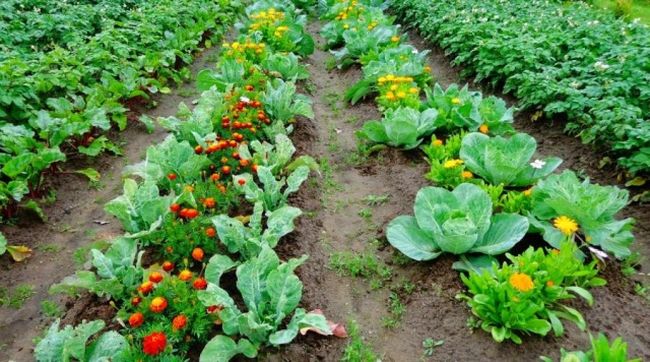

What does cabbage not grow with?
- Orange fruits (carrots) and cabbage are dangerous neighbors. These two crops can be sick with the same diseases, they are loved by the same pests.
- Cabbage with other cruciferous vegetables is also not the best option. They will get sick often.
- Celery is not recommended to be planted with cabbage, since the strong aroma of celery will gather all the white butterflies from the area.
What to plant after onions in the same season
Onions are harvested most often in August, and sometimes even earlier (early ripening varieties), therefore, so that the garden is not empty, you can plant something else immediately after. What can be planted after onions in the same season:
- A salad that will always delight you with freshness and will be in place on any table. The salad bag should be marked as summer-sowing.
- Early maturing cabbage, most often these are hybrid varieties with ultra-early ripening periods.
- Early ripe varieties of beets and carrots, which are not suitable for long-term storage, but will delight you with their juicy fresh fruits ripened in early autumn.
- Radish, which should not be too deep in the soil when late planting after onions.
- Radish, for which planting at this time is ideal due to the shorter daylight hours. When planting in spring, it can go into the arrows, and the second half of summer is very suitable.
- Dill and other greens that you always want to have fresh on the table.


Symbiosis with strawberries
Impact of cabbage on the soil
When planting new vegetable varieties, you need to understand what effect its predecessors had on the soil. In order for cabbage to develop according to all the rules, it must receive the required amount of nitrogen, so it actively absorbs it from the soil. Due to the deep developed roots, which can go up to 90 cm deep into the ground, the soil remains depleted after harvest.
Cabbage is susceptible to many diseases, the bacteria of which remain in the soil. Future crops will be subject to the same diseases. The parasites that annoyed vegetables all season hibernate in the ground. As soon as a new crop is planted in this place, pests will pounce on it.
You should not plant cabbage in one place for several years, because ultimately, yields will be reduced to zero. The optimal interval for planting cabbage in one area is about 5 years. It is for this amount of time that the soil is able to fully recover. Nutrient fertilizers (phosphorus, humus, or mullein) are annually applied to the soil.
The best neighbors to plant nearby
The best neighbor in the garden is strawberries. They have an excellent symbiosis, as a result of which the strawberry develops and grows. Its berries become larger and sweeter. But after it, this vegetable is not recommended to be planted. In addition to strawberries, onions get along well with carrots, celery, cabbage lettuce and beets.
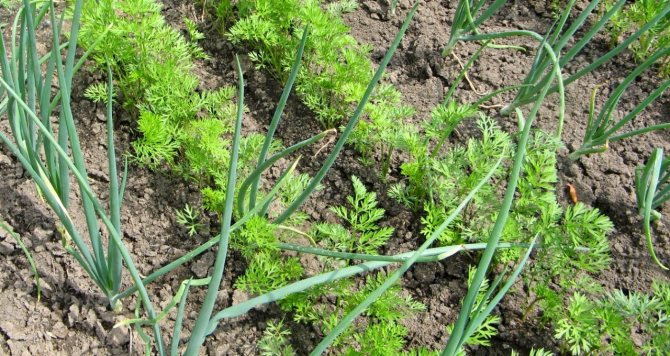

Union with carrots
Interesting! Onions next to carrots are a classic combination. Carrots do a great job with onion flies, which often affect vegetable crops. With such a landing, the use of insecticides is not required.
It's amazing how a crop of such seemingly simple plants can depend on predecessors and influence followers. It is very important to choose the right plants growing before and after, as well as allies.Then the results will be able to exceed even the most daring expectations. Even beginners, having studied a number of simple rules, will be able to grow a crop that experienced gardeners who do not know them will envy.
Good precursors for cabbage
The choice of the most useful "predecessors" is due to the strong love of the head species for nitrogen. The culture reacts gratefully even to fresh manure. This is what prompted the recommendation of the priority placement of cabbage in the crop rotation.
Important! It is recommended to dig up the ground for the beds in the fall. During these works, fresh manure should be introduced into the soil. When planting late-ripening varieties, spring is perfect for preparatory work.
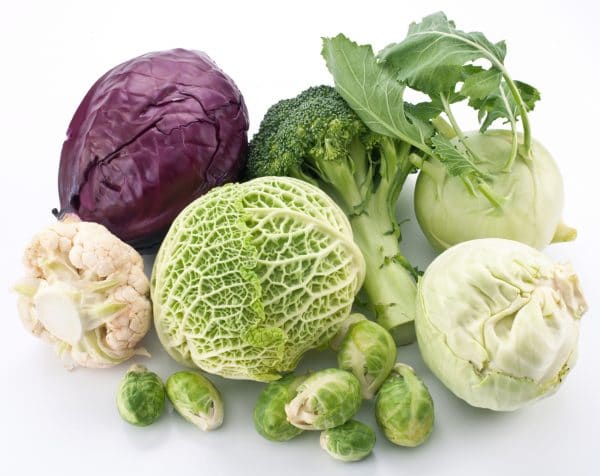

Species variety of cabbage
All of the "predecessors" listed below do not require nitrogen in the soil for their development. The substrate remains sufficiently enriched with organic matter and allows cabbage to fully develop and grow.
Cucumbers
Due to the fact that cucumbers practically do not deplete the soil throughout the entire growing period, they are an excellent "precursor" for cabbage. In principle, all pumpkin species are not very demanding on nitrogen, which is subsequently so important for the healthy growth of all types of cabbage vegetables.
Onion
Due to the fact that the onion family feeds on the surface of the soil, it does not pretend to be those micronutrients that are so necessary for cabbage. The difference in dietary regimes makes them convenient "predecessors" for head vegetables.
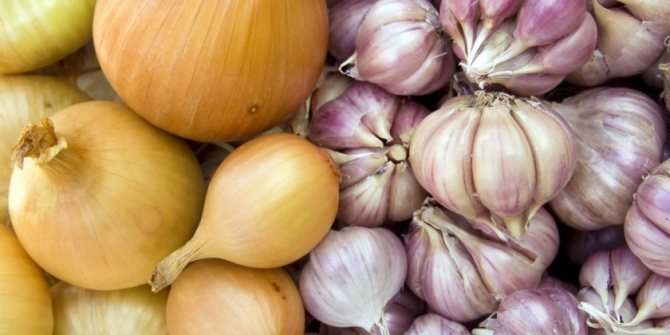

Onion culture is an excellent "predecessor" for cabbage
Legumes
Planting any legumes as “precursors” is extremely beneficial for cabbage. It can be peas or beans. Different growing and nutritional conditions allow these species to practically not compete with each other for the much-needed microelements. Quite often, experienced gardeners advise using legumes as green manure, so necessary to "unload" tired soil.
Roots
The most famous root crops include beets and carrots. Their use before planting cabbage is possible due to the difference in the depth of root penetration. The root system of almost all root crops lies at a depth of 2 or more m. While cabbage is deepened by no more than 1 m. Thanks to this, neither carrots nor beets deplete the soil and do not draw out elements that are so necessary for feeding the head of cabbage.
Characteristics and methods of growing crops
Onions are a biennial crop. In the first year, it develops a bulb, from which a flowering plant grows in the second year, which gives seeds.
Well-dried bulbs are perfectly stored for several months at a temperature of about + 20 ° C and a humidity of 50-70%.
The "turnip" is grown in three ways: vegetatively, as an annual and biennial culture.
How to grow an annual
Large heads grow from seedlings in the first year. This method is rarely used, because growing and planting seedlings takes a lot of time and effort. But we must admit that these labor costs are paid off by the high yield of large bulbs.
For annual cultivation, such early varieties and hybrids as Stuttgarter Riesen, Yukont, Carmen, Snowball.
How to grow a biennial
In the first year, seeds are sown and onion sets are grown. In the second year, it is used as a planting material. Mid- and late-ripening varieties are grown through the set. For example, Setton, Aleko, Farmer late, Slava Ozharova.
Vegetative reproduction
Vegetative propagation is sowing with small bulbs. In this way, northern varieties of crops are mainly grown, forming a nest of 10-20 bulbs.
Local varieties of the region are suitable for the vegetative method, for example, the Kirov, Pskov, Novgorod regions. Such onions are planted simultaneously with the set or a little later (until the end of May).
Important! Planting in the fall is good because the plants are less affected by the onion fly invasion.By the time the fly is ready to lay eggs, a dense bottom and a developed root lobe have already formed at the heads. Thus, it will be more difficult for hatched larvae to get inside the heads.
Terms and rules for planting before winter


Before boarding in the fall, the planting material is sorted out and sorted. Instances with signs of disease, rot, mechanical damage are removed.
The selected sets are sorted by size into three groups: bulbs up to 1 cm in diameter (wild oat), from 1 to 3 cm in diameter (sets) and more than 3 cm in diameter (sample). Sevoks from the first and second groups are planted for growing bulbs; the sample is well suited for planting on greens.
A planting bed is chosen in a well-lit place. It is important that rainwater and moisture do not stagnate on it after the snow melts.
To protect against diseases and pests, the soil is disinfected with a solution of copper sulfate (1 tbsp. L per 10 l of water). Watered at the rate of 2 liters per 1 sq. m.
Then fertilizers are applied. For each square meter use 3-4 kg of humus, 5 kg of peat, 2 tbsp. l. superphosphate. The earth is being dug up.
Finished beds are leveled and compacted. On the surface of the earth, grooves are cut with a depth of 5 cm at a distance of 15 cm from each other. Sevok is laid out in furrows at a distance of 3-4 cm from each other and sprinkled with a mixture of peat and humus.
General rules for crop rotation
Observance of crop rotation is especially important when a large number of species are planted on a small area. Each of them requires its own soil composition and a set of nutrient minerals and trace elements. During cultivation, the plants are fed with the fertilizers necessary for their growing season, and after harvesting the land is oversaturated with those chemical elements that were not needed. And, conversely, there will be a shortage of substances in the soil that were used during the growing season.
The need to alternate plants of different types on the site is due to the prevention of the spread of infection and parasitic insects. Cultures have their own set of infections and parasites. A fungal infection can completely affect, for example, potatoes and completely not touch onions, or vice versa. Many pests hibernate in the soil in the form of larvae, in the spring, individuals begin to grow actively, if crops of a species suitable for the pest are planted in the garden, there is a serious threat of crop loss.
When planting, take into account the possible influence of allelopathy (interaction). The root system and the aboveground part of plants synthesize and release biological substances that act positively or negatively on neighbors. Onions release phytoncides into the soil, they destroy bacteria that cause rotting. If the culture is planted in the garden for several years, the effect is exactly the opposite, young bulbs are exposed to rot.
Important! Vegetables of the same type, according to the rules of crop rotation, do not replace each other in the garden.
General requirements for crop rotation:
- Do not use a planting bed with the same nutrient intake.
- The biological composition released into the soil by the root system is taken into account.
- It is impossible to cultivate species with the same diseases and insects parasitizing them.
- In the spring, early vegetables are not planted after late ripening crops, because the soil did not have time to accumulate a sufficient amount of necessary microelements.
It is recommended to sow green manure after harvesting early vegetables. Buckwheat or clover are good predecessors for onions.
Groups of vegetable crops
To understand the alternation of crops in the garden, it is important to understand which groups all plantings are divided into (vegetables and cereals). They look like this:
| Group | Name |
| Tuber | Jerusalem artichoke, potatoes and sweet potatoes |
| Root vegetable | Carrots, beets, radishes and turnips, radishes, as well as parsley, celery |
| Legumes | Peas, chickpeas, lentils and beans |
| Nightshade | Tomato, pepper, and eggplant |
| Bulbous | Garlic and onion |
| Melons | Melon, pumpkin, watermelon, squash, zucchini |
| Cabbage | All varieties of cabbage |
Tips and tricks for gardeners
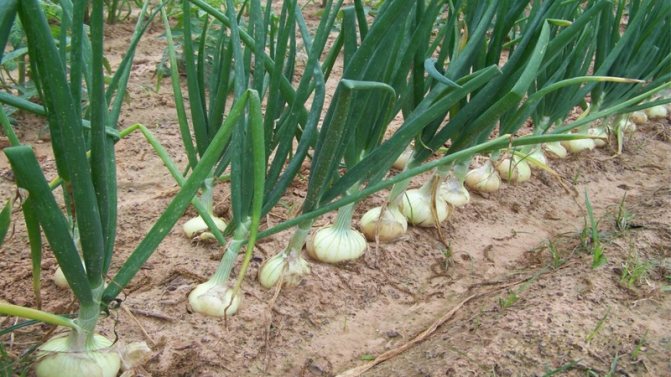

For those who first decided to plant winter onion, the recommendations of experienced gardeners will come in handy:
- Do not be lazy to draw up a plan of the garden, marking all the beds on it. Each year, mark where which crops are planted. It is useful to plan plantings several years in advance.
- On the plan, additionally indicate how much space which crop occupies in the garden: a third, a quarter, a half, a whole, etc. For the next season, it will be possible to make suitable plantings like a puzzle. After all, it is not necessary to sow the entire garden with any one crop.
- If there is no way to change the place of a culture, a neighbor from another family is added to it on the garden bed: they sow a row of one culture, a row - another. Onions are a good neighbor for beets, chicory, carrots. Unsuccessful neighbors for onions are beans, peas, parsnips, sage, parsley, radish, cabbage, radish, chives, broccoli, kohlrabi, dill, turnips.
- In the spring, after the emergence of seedlings, the planting is thinned out. Leave 5-6 cm between the plants. The pulled out onion can be eaten.
- When planting seedlings in the fall, it is important to properly deepen the onions. If planted too deep, the onions will sprout for a long time in spring, waiting for the sun to warm the ground. If placed near the surface, the sevok will freeze or get wet. The optimum sowing depth is 5 cm.

